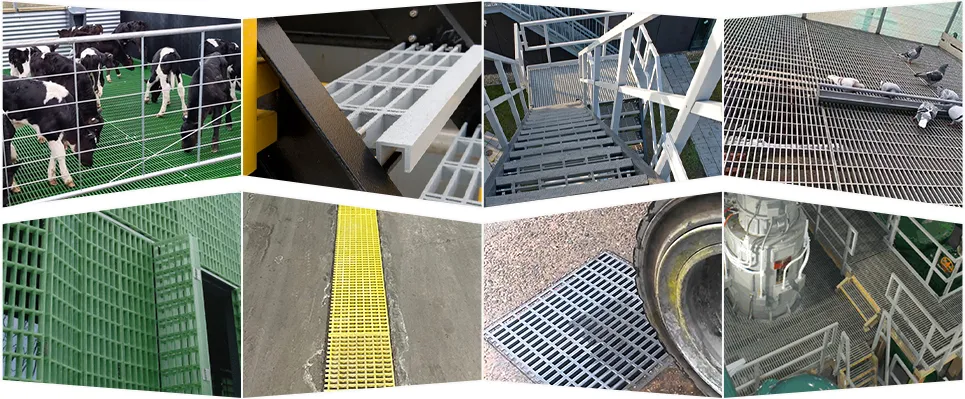loading...
- No. 9, Xingyuan South Street, Dongwaihuan Road, Zaoqiang County, Hengshui, Hebei, China
- admin@zjcomposites.com
- +86 15097380338
- Welcome to visit our website!
Advancements in Glass Fiber Reinforced Polymer Rebar for Sustainable Construction Solutions
Understanding Glass Fiber Reinforced Polymer Rebar A Modern Solution for Construction
In recent years, the construction industry has witnessed a significant shift towards the adoption of advanced materials that enhance durability, sustainability, and overall structural performance. One such innovation is Glass Fiber Reinforced Polymer (GFRP) rebar, which is steadily gaining popularity due to its unique properties and benefits over traditional steel rebar.
What is GFRP Rebar?
GFRP rebar is a composite material made from glass fibers embedded in a polymer matrix. This combination provides an extremely high strength-to-weight ratio while being resistant to corrosion, making it an attractive alternative to conventional steel reinforcement bars. The manufacturing process involves weaving glass fibers and impregnating them with a polymer resin, resulting in a product that exhibits superior tensile strength and flexibility.
Advantages of GFRP Rebar
1. Corrosion Resistance One of the most significant advantages of GFRP rebar is its superior resistance to corrosion. In traditional steel reinforcement, rust and corrosion can lead to structural failures and costly repairs. GFRP, on the other hand, remains unaffected by moisture, salt, and other corrosive agents, making it ideal for use in harsh environments such as coastal areas or chemical plants.
2. Lightweight GFRP rebar is considerably lighter than steel, which not only facilitates easier handling during construction but also reduces the overall weight of the structure. This quality can lead to savings in transportation and installation costs, as well as lower logistical challenges on-site.
glass fiber reinforced polymer rebar

3. Non-Magnetic and Non-Conductive GFRP rebar does not interfere with electromagnetic signals, making it an excellent choice for applications in environments sensitive to magnetic interference, such as hospitals and laboratories. Additionally, its non-conductive property makes it safe for use in electrical applications, further broadening its usability.
4. Durability The durability of GFRP rebar extends the lifespan of concrete structures. By eliminating issues related to corrosion and chemical damage, structures reinforced with GFRP can last significantly longer, ultimately leading to lower lifecycle costs.
5. Environmental Impact In an era where sustainability is a priority, GFRP rebar stands out as an eco-friendly option. Its production often involves less energy consumption compared to steel, and its longevity reduces the frequency of repairs and replacements, contributing to lower material usage over time.
Limitations of GFRP Rebar
While GFRP rebar presents numerous advantages, it’s important to acknowledge some limitations. Firstly, it tends to be more expensive than traditional steel rebar, although the overall savings in maintenance and replacement costs can offset this initial investment. Additionally, GFRP may have lower thermal stability and can be affected by extreme temperatures, necessitating careful consideration in applications with significant thermal variations.
Conclusion
GFRP rebar is revolutionizing the construction industry, offering a resilient, lightweight, and corrosion-resistant alternative to traditional steel reinforcement. Its unique combination of properties makes it particularly suitable for specific applications, including bridges, marine structures, and areas exposed to harsh environmental conditions. As the demand for sustainable and durable building materials continues to rise, GFRP rebar is poised to play a critical role in shaping the future of construction. With ongoing advancements in material science and engineering, the potential applications of GFRP are bound to expand even further, paving the way for more innovative, efficient, and environmentally-friendly infrastructure solutions.
-
The Rise of FRP Profiles: Strong, Lightweight, and Built to LastNewsJul.14,2025
-
SMC Panel Tanks: A Modern Water Storage Solution for All EnvironmentsNewsJul.14,2025
-
GRP Grating: A Modern Solution for Safe and Durable Access SystemsNewsJul.14,2025
-
Galvanized Steel Water Tanks: Durable, Reliable, and Ready for UseNewsJul.14,2025
-
FRP Mini Mesh Grating: The Safer, Smarter Flooring SolutionNewsJul.14,2025
-
Exploring FRP Vessels: Durable Solutions for Modern Fluid HandlingNewsJul.14,2025
-
GRP Structures: The Future of Lightweight, High-Performance EngineeringNewsJun.20,2025
